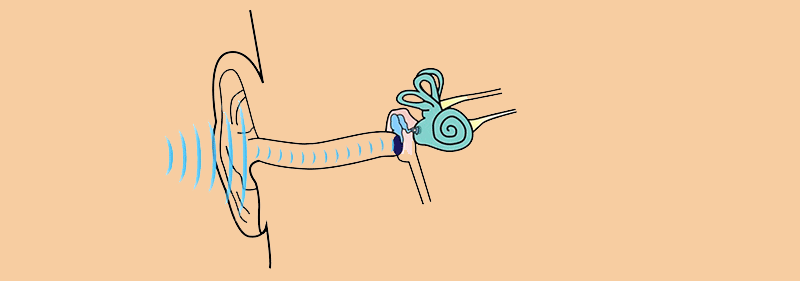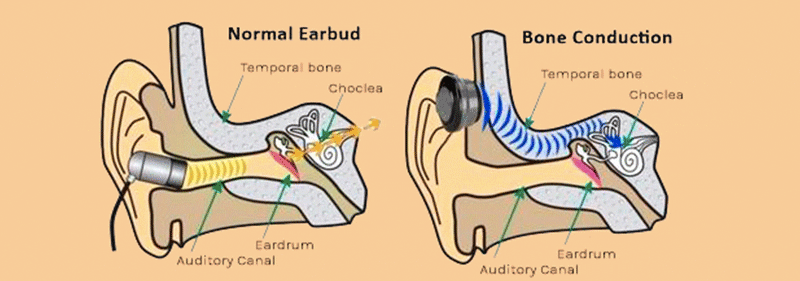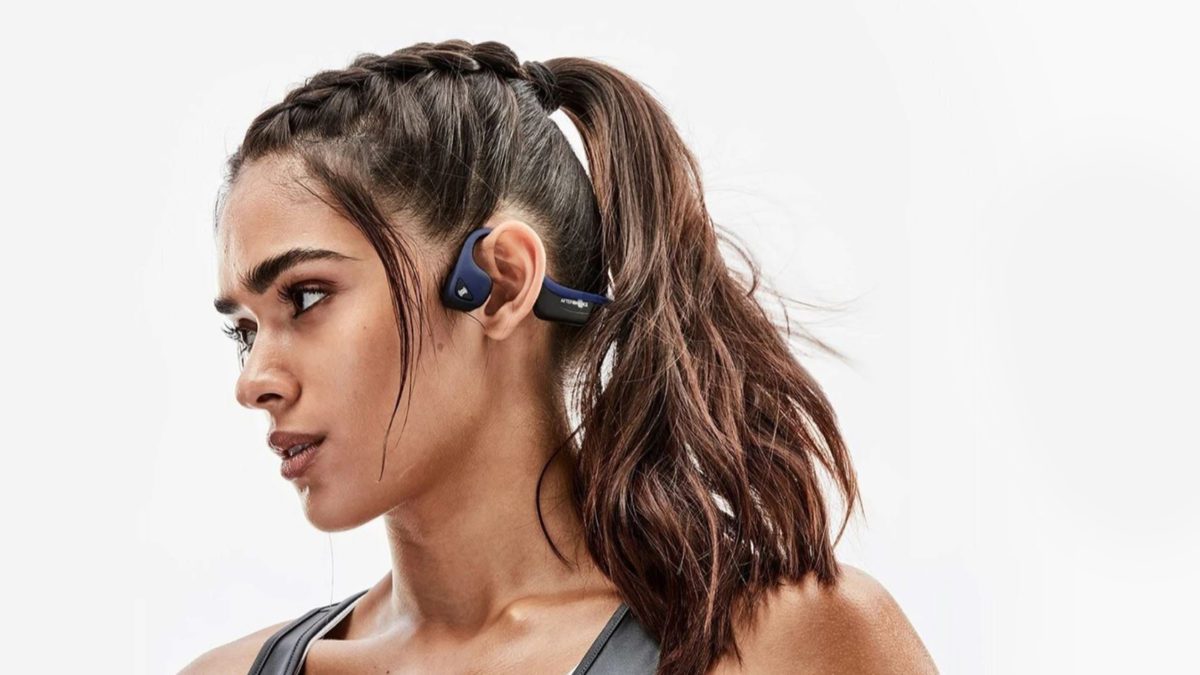Jawbone headphones? Are you wondering why in the world you would need headphones for your jaw? It sounds peculiar, yet jawbone headphones or more popularly known as bone conduction headphones, are the newest wave in headphones. Perhaps you have heard of them and are curious.
Before you decide on a pair of bone conduction headphones, it’s essential to understand what you are buying. Exactly how do bone conduction headphones work, and are they better than regular headphones? We’ll answer all of your questions and help you understand bone conduction technology.
Don’t worry. It’s not as scary as it may sound.

Bone Conduction Headphones
Before we talk about how bone conduction headphones work, it’s crucial to understand how traditional headphones work. As we all know, headphones fit into your ear canal or over your ear, and we jam away to our favorite tunes. But wait! How exactly do we hear the sounds?
Sound from headphones travels through the air, enters the outer ear, travels through the inner ear canal to the eardrum. In turn, the eardrum vibrates, which causes the cochlea (hollow bone in the inner ear) to record it as sound.
So how do bone conduction headphones work?
In contrast to traditional headphones, wireless bone conduction headphones bring the sound to the cochlea differently. Instead of the sound traveling into the ear through the air, these jawbone headphones are placed on the cheekbones.
The sound vibrations travel directly through the cheekbones and hit the cochlea, registering the sound. Even though the sound bypasses the outer ear and eardrum, you can still hear your music, podcast, or audiobook. Pretty cool, right?

Are they Safer than Traditional Headphones?
Loud music or sound can damage your hearing no matter how the cochlea receives the sound. Therefore, traditional headphones and bone conduction headphones can be equally detrimental to your hearing if your ears are exposed to high volume for too long.
Although bone conduction headphones bypass the eardrum, the damage to the cochlea in the inner ear is imminent if there is exposure for too long. Neither headphone is safe from that.
That said, since the volume is slightly lower with bone conduction headphones, it’s more likely you would have hearing loss when listening to traditional headphones at high volumes since they fit right into your ear.
One thing to note is that some have suggested that bone conduction headphones are more hygienic since they do not fit into your ear canal. We all know that earwax builds up and sometimes can get on your headphones, and it’s pretty gross.
Not only that, putting headphones into your ear can transfer dirt and germs into your ears–not good either. Since bone conduction headphones do not enter your ear canal, they are considered cleaner to use than traditional ones.
Pros of Bone Conduction Headphones
There are many reasons to try out a pair of bone conduction headphones, so let’s look at some of the benefits they provide.

They Do Not Cover Your Ears
Did we just state the obvious? However, it’s important to note the benefits of headphones that do not cover your ears or go inside your ears, silencing everything around you. Where are my runners?
If you are a runner, you realize the importance of needing your music or audiobook to accompany your run. It helps to entertain you as you power through your training. The drawback to running with headphones is that you aren’t aware of your surroundings because you can’t hear them.
The beauty of bone conduction headphones is that you can be aware of your surroundings and still listen to your favorite tunes.
Because they don’t cover your ears, ambient noise surrounds you. Think of it like listening to the radio in the car. You can jam out to the music, but you can still hear the traffic around you and the people in the car. It sounds like a pretty good deal, right?
Hearing Impaired Can Listen Too
It’s important to keep in mind that people with sensorineural hearing loss (issue with the cochlea or higher inside the ear) will not hear with hearing aids or bone conduction devices. In those cases, they can sometimes benefit from a cochlea implant, usually on a case-by-case basis.
Those with conductive hearing loss (issue with the outer or middle ear) can benefit from a hearing aid or bone conduction headphones. Because bone conduction headphones bypass the outer and middle ear and go straight to the cochlea, people with conductive hearing loss can use these headphones to help them hear better.

Less Likely to Cause Hearing Loss than Traditional Headphones
We touched on this a little earlier when we talked about the safety of bone conduction headphones vs. traditional ones. Listening to high volumes for long periods is terrible no matter what headphones you use.
However, since the volume is not as loud and traveling directly into the ear with bone conduction headphones, it is a little less likely to suffer from hearing loss when using them. Also, the outer ear works to amplify sound that travels into the ear.
Since bone conduction headphones bypass the outer ear, this also helps to prevent hearing loss.
More Hygienic
It’s important to note that traditional headphones tend to be dirty. Think about it. How often do you clean your headphones? If you answered never, then you are not alone. Putting headphones in your ear means putting dirt and other germs in your ear.
Plus, everybody has earwax, and that can get on them too. Ewwww David! Sorry, channeling some Schitt’s Creek. Anyway, bone conduction headphones tend to be more hygienic since they aren’t put in the ear at all. Score!
Cons of Bone Conduction Headphones
While there are many positives for buying the best bone conduction headphones, there are some not-so-great things are about them. Let’s take a look at precisely what they are.

Limited Sound Quality
To start, bone conduction headphones have come a long way when it comes to technology. They have been around for a long time, but the sound quality has recently gotten a lot better. That said, they do not compare to the crisp, clean sound quality that you receive with some over-the-ear or in-the-ear headphones.
If you want the kind of sound quality you get from high-end headphones, we recommend traditional headphones. Bone conduction headphones have a similar sound quality to lower-end conventional headphones.
If you’re not looking for the best sound quality ever, then bone conduction headphones will work just fine for you.
No Noise-Cancellation
Bone conduction headphones are not noise-canceling. If you are getting on a plane and need to sleep, then noise-canceling headphones are a must. However, the point of bone conduction headphones is to be aware of your surroundings.
Listening to music at work but still responding to your cubemate when they ask you a question is why these headphones are so popular. You can’t ignore your co-workers by wearing noise-canceling headphones.
Or maybe you want to go for a run, and always being aware of traffic, people running behind you, or people on bikes. If you had noise-canceling headphones on, it might risk your safety. Just something to think about.
Fit and Comfort
While some people rave about the comfort of bone conduction headphones, there are some reviews on them not fitting correctly or comfortably.
Despite pressing very gently to your cheekbones, some have stated that the pressure is too much and they don’t like it. To have good audio quality, bone conduction headphones must have the correct fit. If they don’t, you will have trouble hearing your music.

What’s the Battery Life Like?
In our bone conduction headphone review, we gave you some of the best bone conduction headphones you could buy. The Aftershokz Aeropex came in hot with eight hours of battery life.
While that doesn’t seem like that much, it will get you through the day. It comes with Bluetooth 5.0, and that can drain the battery some. Make sure you charge it every night as you do with your smartphone.
Pretty simple, right? Aftershokz Titanium and Afterchokz Trekz Air only have a six-hour battery life so if you are looking for longer, go with the Aeropex.
Get a Pair of Bone Conduction Headphones
We don’t like to tell you what to do, but we will in this case. Jawbone headphones are just bone conduction headphones with a fancy name. We dig it, though.
If you want to hear ambient noise while jamming to your favorite tunes, these are probably the headphones to try. Most bone conduction headphones fit well, have decent battery life, are water-resistant, and have Bluetooth 5.0 ability.
We think they are pretty groovy. Let us know your thoughts. Happy listening!

